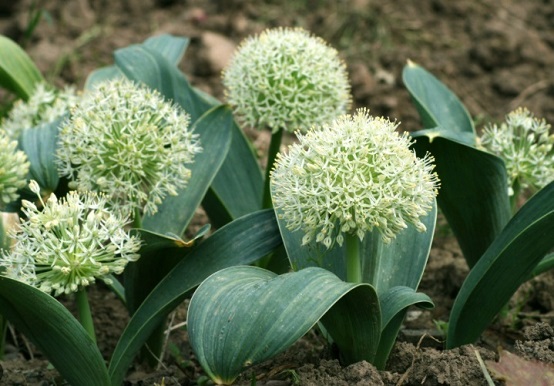Nikhil Prasad Fact checked by:Thailand Medical News Team Aug 11, 2025 4 months, 3 weeks, 5 days, 18 hours, 52 minutes ago
Thailand Medical News: Ancient Plants Under Modern Investigation
Two traditional plants, Allium kharputense and Anchusa azurea, long used in Southeastern Türkiye for various ailments, are now gaining attention for their potential in treating glaucoma. Researchers from Sirnak University, Siirt University, Atatürk University, and Agri Ibrahim Çeçen University conducted a detailed laboratory study examining the plants’ bioactive compounds and their effect on enzymes linked to the disease. This
Thailand Medical News report highlights how these natural herbs could open new possibilities in managing a leading cause of blindness.
 Extracts from the Allium kharputense plant can help with glaucoma
Understanding Glaucoma and the Role of Carbonic Anhydrase
Extracts from the Allium kharputense plant can help with glaucoma
Understanding Glaucoma and the Role of Carbonic Anhydrase
Glaucoma damages the optic nerve, often due to increased pressure in the eye. One important target in glaucoma therapy is the carbonic anhydrase (CA) family of enzymes, especially the hCA I and hCA II isoenzymes. When overactive, these enzymes contribute to fluid buildup in the eye, raising pressure and damaging vision. Current drugs can be effective but may cause side effects, leading scientists to search for plant-based alternatives with fewer risks.
Key Findings from the Study
The research focused on ethanol and water extracts from both plants’ aerial parts. Laboratory tests showed that A. kharputense and A. azurea possess high levels of phenolic and flavonoid compounds—natural antioxidants that also have enzyme-inhibiting properties. In anti-glaucoma tests, the water extract of A. kharputense was the most potent against the hCA II enzyme, with an IC50 value (a measure of inhibitory strength) of 81.02 µg/mL. The ethanol extract of A. kharputense was particularly strong against hCA I, showing an IC50 value of just 9.21 µg/mL, indicating very high activity compared to many other plant-based extracts reported in scientific literature.
The phytochemical analysis revealed abundant bioactive molecules such as Astragalin, isoquercitrin, kaempferol, and quercetin. These compounds are known for their antioxidant, anti-inflammatory, and enzyme-regulating effects, all of which are beneficial in reducing oxidative stress and lowering intraocular pressure—a key step in glaucoma prevention and treatment.
Why These Results Matter
The results suggest that both A. kharputense and A. azurea could be developed into natural therapies to complement or even replace certain synthetic drugs for glaucoma. Their strong antioxidant content adds an extra layer of benefit, potentially protecting delicate eye tissues from free radical damage while helping control enzyme activity linked to fluid imbalance in the eye.
Conclusions and Future Potential
The findings position these two plants as valuable candidates for further pharmaceutical development. While more clinical research is needed to confirm safety and effectiveness in humans, the study demonstrates that
nature-based solutions may one day become part of mainstream glaucoma care. This could be especially important for patients seeking gentler, multi-benefit treatments that not only address eye pressure but also provide general health support through antioxidant and anti-inflammatory actions.
The study findings were published in the peer reviewed journal: Life.
https://www.mdpi.com/2075-1729/15/8/1209
For the latest on Glaucoma, keep on logging to
Thailand Medical News.
Read Also:
https://www.thailandmedical.news/news/canadian-study-finds-that-most-present-drugs-used-for-glaucoma-treatments-can-cause-adverse-issues
https://www.thailandmedical.news/news/widely-used-medication-topiramate-linked-to-vision-issues-and-risk-of-glaucoma
https://www.thailandmedical.news/news/study-warns-that-rock-inhibitors-used-in-glaucoma-and-diabetic-retinopathy-treatments-can-cause-corneal-epithelial-edema
https://www.thailandmedical.news/articles/glaucoma-news
